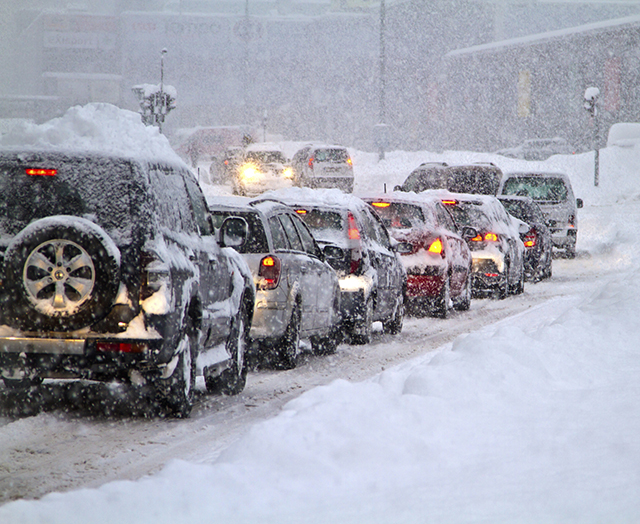Winter weather can bring on snow, slush and ice. The best advice about driving in these conditions is not to drive in such conditions. But if you must venture out, be prepared.
Many newer vehicles have added safety features that can take some of the hazard out of winter driving. But it is important to know how to use optional equipment such as an anti-lock brake system (ABS).
Give yourself a brake
In slippery conditions, using the proper emergency braking technique can mean the difference between a close call and a serious collision:
- On slick or snow-covered roads, drive slower and maintain a greater distance between your car and the vehicle ahead of you.
- Be familiar with your car’s brakes.
The ABS prevents skidding and wheel lock-up. ABS works with your regular braking systems by automatically pumping them. With ABS, a sensor located in each wheel detects when the wheel is about to stop rotating, lose traction and skid. The ABS then slightly releases braking pressure so the wheel can continue to rotate. This helps maintain steering during hard or panic braking.
According to the National Highway Traffic Safety Administration (NHTSA), unlike traditional brakes, anti-lock brakes should never be pumped.
To maximize the effectiveness of your anti-lock brakes, this is what you should do:
- Keep your foot firmly planted on the brake pedal while the ABS brakes for you and you can concentrate on steering to safety.
- Maintain pressure and let the ABS adjust brake pressure automatically. Do not remove your foot from the brake.
If your car does not have anti-lock brakes, follow these tips:
- Manually pump the brakes to prevent wheel lock up.
- Quickly and gently release the brakes. If you remove your heel from the floor, the weight of your entire leg could apply too much pressure and cause the wheel to lockup.
- If the wheels lock, quickly release brake pressure, then immediately reapply it using less force.
Prep your vehicle for winter
Before bad weather arrives, the NHTSA and the Centers for Disease Control recommend that you:
- Have your vehicle thoroughly inspected by a certified technician. The motor oil, radiator, tires, battery, and ignition system all must be in top condition to perform well year-round.
- Prepare a winter survival kit that includes a flashlight, battery-operated radio with extra batteries, blankets, medical kit, tool kit, booster cables, warning device (flares or reflective triangle), bag of sand or cat litter for traction, cloth or paper towels, snow brush, tire pump, flat fixer, washer fluid, compass and maps, plastic bags for sanitation, and small shovel.
- Keep gas tank full to avoid ice in the tank and fuel lines.
Hitting the road
Follow these rules when you do drive:
- Decrease your speed.
- Increase stopping distances.
- Maintain visibility.
Safety experts say the first two recommendations are essential because it is impossible to know what’s beneath a layer of snow until you apply your brakes. Also, “black ice”–that thin, transparent coating–sometimes appears as if it is merely a wet surface.
Proper visibility means more than just “peephole vision” driving, or clearing just the driver’s side of your windshield. Clear snow, ice, and slush from all surfaces of your car, including the windshield, windows, mirrors, and body before driving. Sheets of snow on your hood or roof can peel off while driving and obscure your vision or that of the driver behind you. A film of dried slush on your headlights can dim them. So, for your safety and that of other drivers and pedestrians, clean all areas of your car before you drive it.









